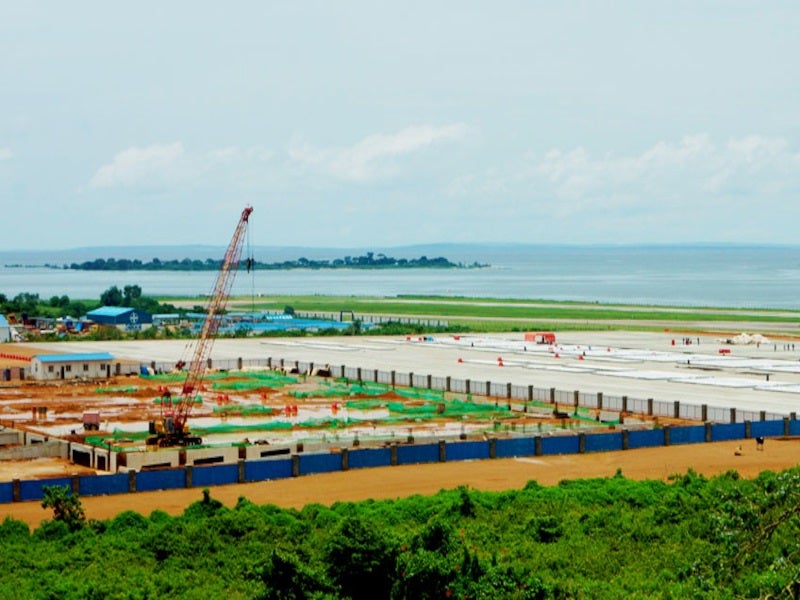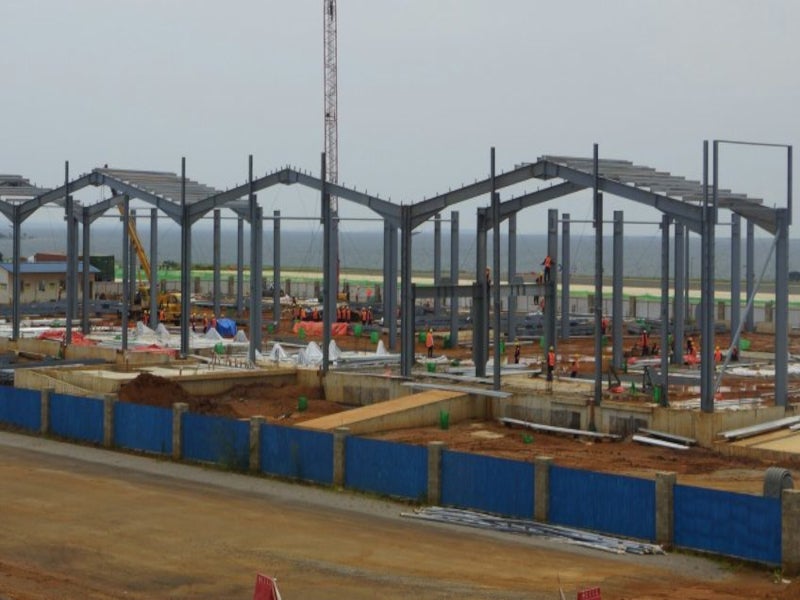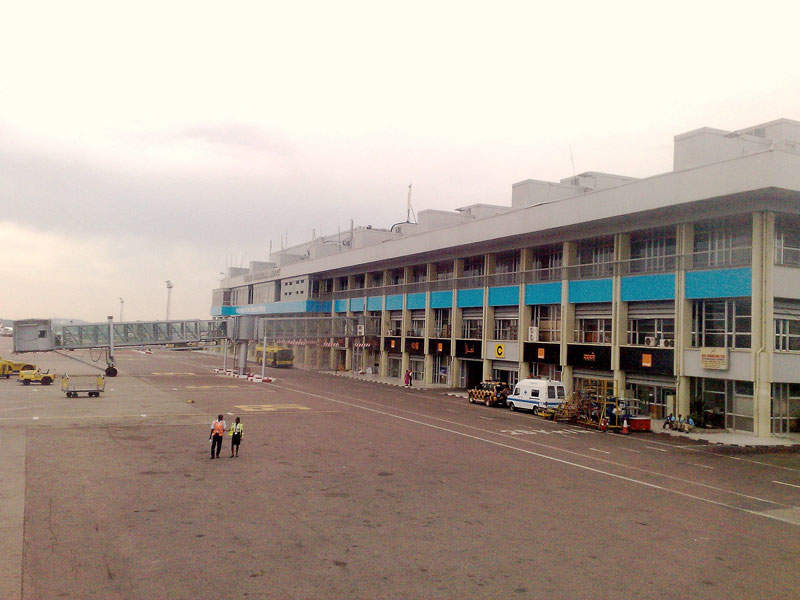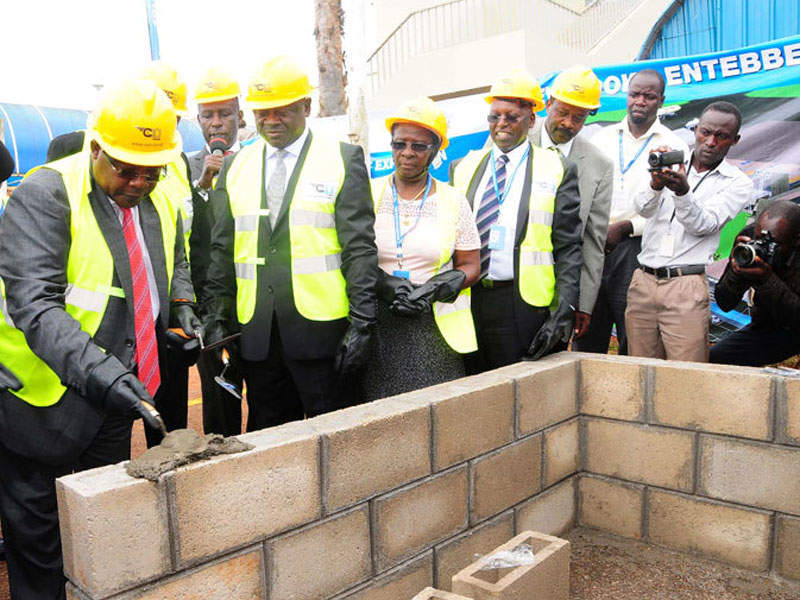The main airport in Uganda, Entebbe International Airport, located roughly 40km from Uganda’s capital city Kampala, is undergoing expansion in a phased manner to accommodate the country’s rising passenger and cargo traffic.
The airport was officially inaugurated in 1951. The upgrade and expansion project was unveiled by the Civil Aviation Authority of Uganda (CAA) in January 2015, which forms a part of a 20-year National Aviation Master Plan (2014-2033).
The expansion project aims to increase the passenger terminal’s capacity from the current 410 arriving and 320 departing passengers to 930 arriving and 820 departing passengers during peak hours. The renovation will also enable the airport to increase the availability and frequency of international flights.
Entebbe International Airport is anticipated to handle 6.1 million passengers and 172,000t of cargo a year by 2033.
Construction and financing for Entebbe airport expansion
The upgrade and expansion work for Entebbe International Airport are set to be carried out in three phases until 2033 by China Communication Construction Company.
The first phase’s groundbreaking ceremony was held in August 2015 while the construction of the new cargo building began in May 2016. Phase one is scheduled to be completed in 2023.
CAA received approval from the Parliament of Uganda to secure $200m of loan from the Export-Import Bank of China for phase one of the project in July 2015.
Additionally, the Government of South Korea agreed to provide a $9.5m grant to improve air navigation services and the automation of facilities at Entebbe airport as part of a memorandum of understanding (MoU) signed with the Ugandan Government in November 2014.
The second phase of works will be carried out at an estimated cost of $120m, while the final phase will involve an investment of $160m.
Details of Entebbe International Airport expansion and upgrade
Phase one of the project will see the construction of a new international passenger terminal building with a capacity of three million passengers, a new cargo centre that can handle 100,000t of cargo a year and a fuel centre.
The passenger terminal building will feature three levels and comprise a total floor area of 20,000m².
The building’s ground level will be allocated for an automated baggage sort system and goods delivery facility, while the second level will house new check-in and boarding areas. The top level of the terminal building will accommodate offices.
New arrivals and departure blocks will be built to handle the increased level of passenger traffic, while the cargo building will house various facilities required for the import and export cargo.
Cold-storage modules will be constructed for the storage of perishable export cargo such as fish from Lake Victoria, fruits, and flowers.
The existing 3.65km-long main runway (17/35), the 2.4km-long secondary runway (12/30) and the associated taxiways F, G and H will be expanded and strengthened to accommodate aircraft such as Boing 77-300 and Airbus 340-600.
Six more parking stands will be added to the existing apron 1 to serve IATA code C aircraft.
The first phase will also cover the rehabilitation and overlay of aprons 1, 2 and 4, while a new apron will be built to handle dedicated cargo aircraft.
Firewater and on-site water supply systems will also be included as part of the expansion project.
In addition, a multi-storey car parking will be built as part of the development’s second phase in order to increase the parking capacity from the current 100 to 360 cars.
Other developments at Entebbe International Airport
An Automation of the Aeronautical Information Management System has been implemented at the airport to allow for automated flight planning management.
A total of 42 new aviation police units have been built in Kigungu in order to relocate the current units at the cargo centre site.
A new baggage handling system featuring X-ray monitors has been placed in the check-in area to improve the baggage handling capacity from the current 500-700 bags an hour to approximately 1,200 to 1,800 bags an hour.
An additional six check-in counters have also been installed to enhance security at the facility.
Contractors involved
China Construction Communications Company (CCCC) is the prime contractor for the project and is responsible for the design, construction and management of the Entebbe International Airport expansion.
COWI was selected to provide planning and design for the first phase of the airport’s rehabilitation.
Vanderlande Industries supplied and installed a baggage handling system at the airport in September 2016 under a $4.8m contract with CCCC.
Dar Al-Handasah Shair & Partners and Orion Associates were selected by CCCC to supervise the works in May 2017.
Korea International Cooperation Agency (KOICA) agreed to provide a computerised maintenance management system (CMMS), an airport operational database (AODB) system and an air traffic services message handling system (AMHS) on behalf of the South Korean government.








